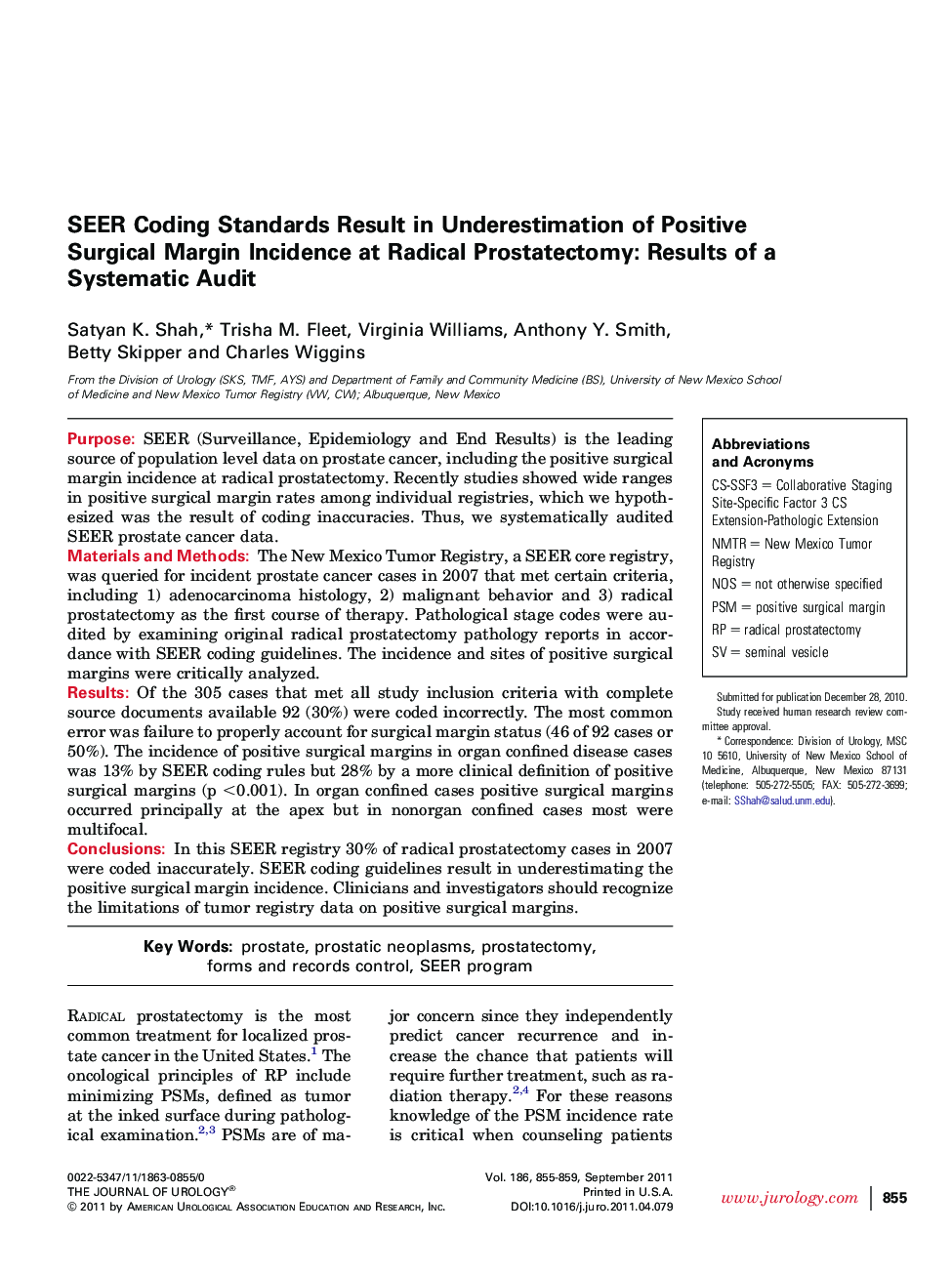| Article ID | Journal | Published Year | Pages | File Type |
|---|---|---|---|---|
| 3865343 | The Journal of Urology | 2011 | 5 Pages |
PurposeSEER (Surveillance, Epidemiology and End Results) is the leading source of population level data on prostate cancer, including the positive surgical margin incidence at radical prostatectomy. Recently studies showed wide ranges in positive surgical margin rates among individual registries, which we hypothesized was the result of coding inaccuracies. Thus, we systematically audited SEER prostate cancer data.Materials and MethodsThe New Mexico Tumor Registry, a SEER core registry, was queried for incident prostate cancer cases in 2007 that met certain criteria, including 1) adenocarcinoma histology, 2) malignant behavior and 3) radical prostatectomy as the first course of therapy. Pathological stage codes were audited by examining original radical prostatectomy pathology reports in accordance with SEER coding guidelines. The incidence and sites of positive surgical margins were critically analyzed.ResultsOf the 305 cases that met all study inclusion criteria with complete source documents available 92 (30%) were coded incorrectly. The most common error was failure to properly account for surgical margin status (46 of 92 cases or 50%). The incidence of positive surgical margins in organ confined disease cases was 13% by SEER coding rules but 28% by a more clinical definition of positive surgical margins (p <0.001). In organ confined cases positive surgical margins occurred principally at the apex but in nonorgan confined cases most were multifocal.ConclusionsIn this SEER registry 30% of radical prostatectomy cases in 2007 were coded inaccurately. SEER coding guidelines result in underestimating the positive surgical margin incidence. Clinicians and investigators should recognize the limitations of tumor registry data on positive surgical margins.
